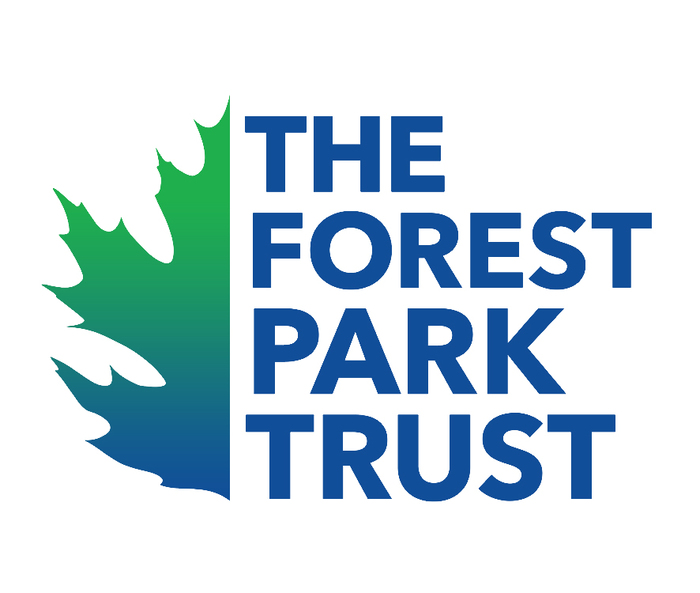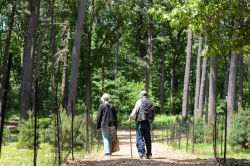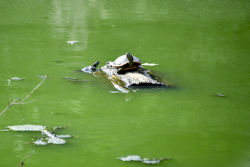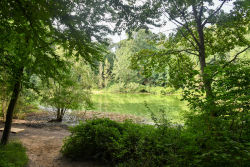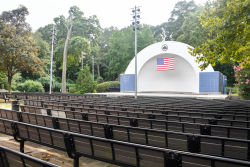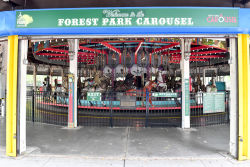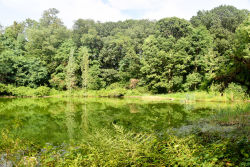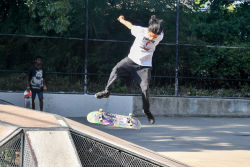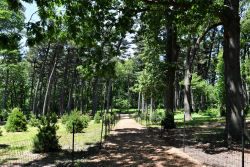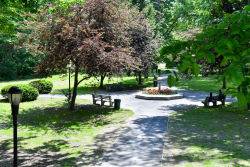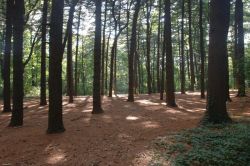Forest Park
Oak Ridge
Standing in a grove of red and black oaks, Oak Ridge is located on the crest of the Harbor Hill Moraine (a mass of rock formed by glacial movement) at the southwestern corner of Forest Park, overlooking Jamaica Plains. A turn-of-the-century golf house, Oak Ridge now serves as the Forest Park administration headquarters, the home of the Queens Council for the Arts, and a community center.
During the acquisition of Forest Park in 1895, landowner David Leggett sold this parcel to the Brooklyn Department of Parks. This two-story structure was built in 1905 in a Dutch Colonial Revival style as a facility for the Forest Park Links. It was designed by the firm of Helmle, Huberty, & Hudswell, who also designed the landmark Williamsburgh Savings Bank (now home to HSBC bank) in Brooklyn. Located near the first tee, the house held lockers for men and women.
The Forest Park Links opened as a 9-hole golf course in 1901, and expanded to 18 holes in 1905. In the early days after its expansion, professional golfers used the course, caddies earned 25 cents per game, and many of the numbered holes had names such as “Camelback,” “Cabbage Patch,” “Bunker Hill,” “Lover’s Lane,” “Old Glory,” and “San Juan Hill,” named for Teddy Roosevelt’s erroneously attributed charge in the Spanish-American War (1898-99). San Juan Hill, the eighth hole, also became popular as a site for sledding in the winter. The 110-acre, par 67 course was modeled after Scottish links and is still known as one of the City’s most challenging golf courses.
In 1906, a second, more exclusive golf house opened near Myrtle Avenue and 80th Street at the house of wealthy French landowner Edward Bourcier. Bourcier had sold all but two acres of his land to the Brooklyn Parks Department several years before. At his death, his house, which now stood at the edge of Forest Park, was sold not to Parks, but to a private owner named Charles Strain, who transformed it into a private clubhouse for the elite Brooklyn Forest Park Golf Club. The City of New York rightfully acquired that property in 1924, and the house is now a part of Dry Harbor Playground on the north side of Forest Park.
Forest Park is one of the natural treasures of New York City. The Wisconsin glacier molded the land 20,000 years ago and left the Harbor Hill Moraine, creating a series of small hills, known as “knob and kettle” terrain, within Forest Park. The Brooklyn Parks Department sought to create a public park and purchased the first parcel on August 9, 1895, with land accumulation continuing until 1898. The parkland, originally known as Brooklyn Forest Park, was acquired by the City of New York with the consolidation of the five boroughs in 1898. At that time, the Brooklyn Parks Department managed parklands in what is now all of Queens and Brooklyn. It was not until 1911 that an independent Queens Parks Department was established for the borough. Forest Park today offers a wide array of recreational facilities, such as the George Seuffert, Sr. Bandshell, a carousel, a bridle path, tennis courts, playgrounds, and Victory Field.
Check out your park's Vital Signs
Clean & Safe
Green & Resilient
Empowered & Engaged Users
Share your feedback or learn more about how this park is part of a
Vital Park System

Know Before You Go

Links
Contacts
Forest Park Administrator: (718) 235-0815
Forest Park Golf Course: (718) 296-0999

